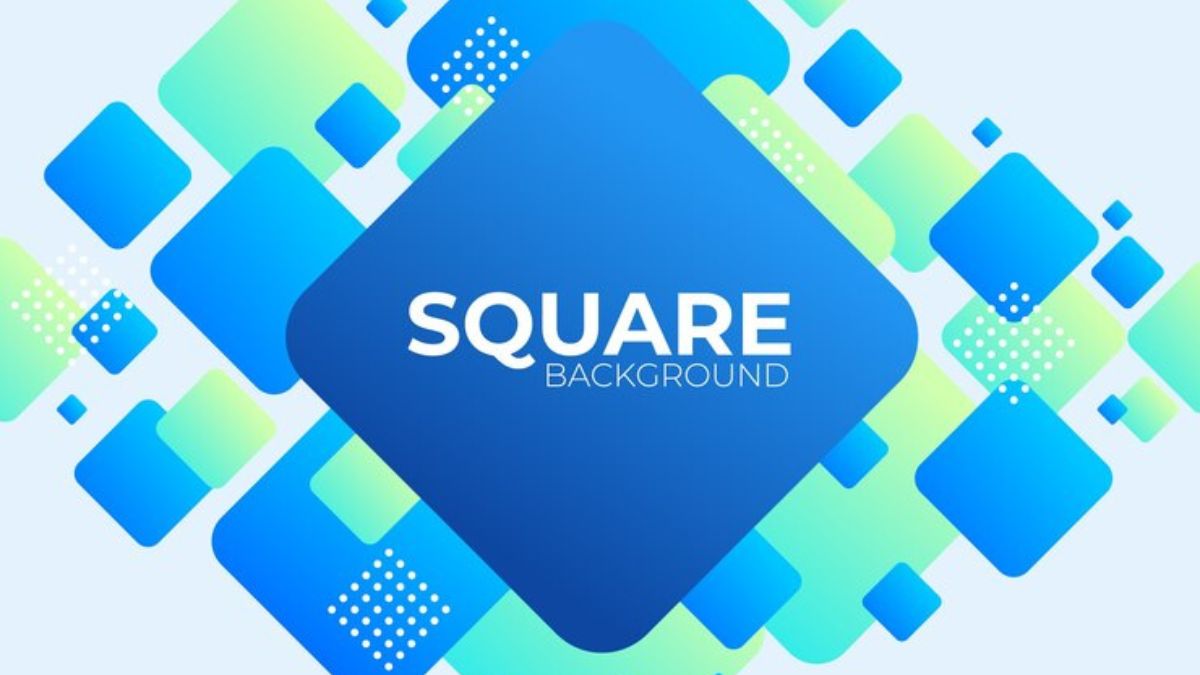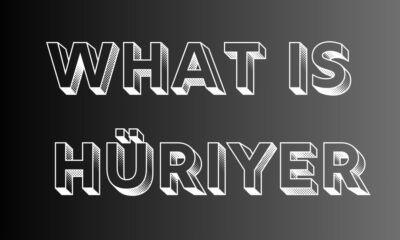Health
The Nutritional Benefits of ancient grain in a healthy cereal nyt in Today’s

ancient grain in a healthy cereal nyt are making a comeback, and for good reason. These nutrient-dense powerhouses have been cultivated for thousands of years, offering more than just a blast from the past. Packed with vitamins, minerals, and fiber, ancient grains bring a unique depth to our diets that modern grains often lack.
In today’s health-conscious world, many people seek ways to elevate their breakfast game. Enter ancient grain in a healthy cereal: the perfect blend of nutrition and flavor that can transform your morning routine. Whether you’re looking to boost energy levels or simply enjoy something deliciously different, incorporating these age-old staples into your meals can be incredibly rewarding.
Curious about how ancient grains stack up against their contemporary counterparts? Or maybe you need inspiration on how to integrate them into your daily diet? Let’s explore the fascinating world of ancient grains together!
The Difference Between Ancient Grains and Modern Grains
ancient grain in a healthy cereal nyt have a rich history that dates back thousands of years. They include varieties like quinoa, farro, and spelt, which were cultivated long before the advent of modern agriculture. These grains remain close to their original form, retaining more nutrients and flavor.
In contrast, modern grains like wheat and corn have been extensively modified through selective breeding. This process often enhances yield but can strip away some nutritional value. Consequently, many people find ancient grains more satisfying and nourishing.
Additionally, ancient grains are typically gluten-free or contain lower levels of gluten. This makes them an excellent choice for those with sensitivities or dietary restrictions.
The growing interest in these traditional foods highlights a desire for healthier eating habits rooted in nature’s offerings rather than processed alternatives. Embracing ancient grains means reconnecting with our culinary heritage while reaping their numerous health benefits.
You may like also:How to Choose the Perfect centerpieces at wedding receptions nyt for new york
Top 5 Ancient Grains to Include in a Healthy Cereal
Quinoa stands out as a powerhouse of protein. It offers all nine essential amino acids, making it an excellent choice for vegetarians and vegans.
Farro has a delightful nutty flavor. This ancient wheat grain is packed with fiber and can help promote digestive health while keeping you full longer.
Amaranth is not just gluten-free; it’s also rich in iron and magnesium. Its unique texture adds an interesting crunch to any cereal mix.
Teff may be small, but it boasts significant nutritional value. High in calcium, this Ethiopian staple supports bone health while being incredibly versatile.
Millet rounds out the list with its mild taste. It’s easy to digest and provides important nutrients like phosphorus and B vitamins, perfect for enhancing your morning bowl of cereal.
Health Benefits of Each Ancient Grain
Quinoa is a powerhouse packed with protein and essential amino acids. It’s gluten-free, making it perfect for those with sensitivities. Plus, its high fiber content aids digestion.
Farro boasts a nutty flavor and offers an impressive amount of vitamins like B3 and B6. This ancient grain supports heart health by lowering cholesterol levels effectively.
Amaranth stands out due to its unique nutrient profile. It’s rich in iron and calcium, contributing significantly to bone health. Its antioxidants also help combat free radicals in the body.
Spelt has a slightly sweet taste while being easier to digest than modern wheat varieties. Rich in fiber, spelt helps maintain stable blood sugar levels.
Barley brings soluble fiber into the mix, promoting gut health while reducing appetite. Incorporating these grains can lead to enhanced overall well-being through diverse nutritional benefits.
Tips for Incorporating Ancient Grains into Your Diet
Integrating ancient grains into your diet can be both simple and rewarding. Start by swapping out your usual rice or pasta for quinoa, farro, or spelt. These grains add texture and flavor to any meal.
Breakfast is a great time to experiment. Use millet or amaranth as a warm cereal base instead of oatmeal. Top it with fruits, nuts, and honey for added taste.
When baking, try replacing some all-purpose flour with ancient grain flours like teff or buckwheat. This enhances nutritional value while offering unique flavors.
Feel adventurous? Add cooked grains to salads for extra crunch and protein. They pair well with roasted vegetables and tangy dressings.
Snacks can also benefit from these nutritious options. Make granola bars using barley flakes mixed with seeds and dried fruit for a wholesome treat that keeps you energized throughout the day.
Delicious Recipes Using Ancient Grains in Cereal
Transform your breakfast routine with some delightful recipes featuring ancient grains in cereal. Start your day with a warm quinoa porridge, cooked in almond milk and topped with fresh berries and a drizzle of honey. It’s both satisfying and nutritious.
For those who prefer something crunchy, try adding spelt flakes to your homemade granola mix. Combine them with oats, nuts, seeds, and a touch of maple syrup for an irresistible topping on yogurt or smoothie bowls.
If you’re feeling adventurous, whip up a barley-based muesli. Mix rolled barley with dried fruits like apricots and figs along with coconut shavings for added flavor. Serve it chilled overnight for a refreshing morning meal.
Consider using buckwheat as the base for pancakes or waffles. Fluffy yet hearty, they pair perfectly with nut butter and sliced bananas—ideal for any brunch gathering!
Conclusion:
Embracing ancient grains in your diet opens up a world of nutritional possibilities. These time-honored foods are more than just trendy ingredients; they provide essential nutrients and unique flavors that modern cereals often lack.
Incorporating these grains into meals can transform the everyday breakfast routine. The variety enhances not only taste but also texture, offering something new for your palate.
Whether you choose quinoa, amaranth, farro, or others, each grain brings its own benefits to the table. They serve as versatile bases for delicious recipes that satisfy both hunger and health needs.
Exploring ancient grains is like embarking on a culinary adventure. Each bite connects you to history while promoting well-being—an exciting combination worth trying out today!
FAQ’s:
Ancient grains have captured the attention of health enthusiasts for their remarkable nutritional profile and versatile uses. Whether you’re looking to boost your breakfast routine or explore new culinary possibilities, these grains offer a wealth of benefits.
What are ancient grains? They refer to whole grains that have remained largely unchanged over the centuries. Popular examples include quinoa, farro, spelt, millet, amaranth, and teff. Unlike modern wheat varieties that dominate our diets today, ancient grains provide unique nutrients and flavors.
When it comes to nutrition, ancient grains stand out with higher protein content and essential vitamins compared to many contemporary options. Incorporating them into a healthy cereal can significantly enhance your meal’s overall quality.
To get you started on this journey toward healthier breakfasts, here are five top ancient grains perfect for cereals: quinoa is not only gluten-free but also rich in amino acids; farro offers hearty fiber; spelt contains important minerals like iron; millet provides magnesium; while amaranth is known for its antioxidant properties.
Each grain brings specific health advantages. Quinoa supports muscle growth due to its complete protein profile. Farro aids digestion thanks to its high fiber content while spelt may help regulate blood sugar levels. Millet contributes valuable minerals such as phosphorus which supports bone health along with other functions in the body.
Incorporating these ancient gems into your diet doesn’t require drastic changes! Start by mixing them into smoothies or yogurts as toppings for added texture and flavor or enjoy them as hot cereals topped with fruits and nuts for breakfast bliss.
For those looking for delicious recipes featuring ancient grain cereals: try overnight oats made with quinoa or baked granola bars using farro mixed with honey and dried fruits – both nutritious options sure to please!
The integration of ancient grain in a healthy cereal nyt opens doors not just nutritionally but also creatively within cooking realms.
FAQ’s:
1. What exactly qualifies as an “ancient grain”?
Ancient grains are defined as crops that haven’t changed much over time through selective breeding
Health
A Guide from doctorhub360.com neurological diseases

Neurological diseases affect millions of people worldwide, often leading to significant changes in their lives. These conditions can impact how we move, think, and interact with the world around us. Understanding these diseases is crucial for patients, caregivers, and even healthcare professionals. At doctorhub360.com neurological diseases we aim to provide valuable insights into neurological diseases—helping you navigate this complex landscape with confidence. Whether you’re seeking information about symptoms or looking for effective treatment options, we’ve got you covered. Join us on this journey as we explore everything you need to know about neurological health!
Common Types of Neurological Diseases
Neurological diseases encompass a wide range of disorders that affect the brain, spinal cord, and nerves. Each type presents unique challenges and symptoms.
Alzheimer’s disease is one of the most recognized forms. It primarily impacts memory and cognitive functions, often leading to profound changes in behavior.
Parkinson’s disease also deserves attention. Characterized by tremors and stiffness, it affects motor control and can significantly impact daily life.
Multiple sclerosis (MS) is another prevalent neurological disorder. It disrupts communication between the brain and body due to damaged nerve fibers.
Stroke can have devastating effects as well. When blood flow to the brain is interrupted, it may lead to paralysis or speech difficulties depending on which area is affected.
Epilepsy involves recurrent seizures that vary widely in severity. This condition can be managed but often requires ongoing medical intervention for optimal control.
Symptoms and Diagnosis of Neurological Diseases
Neurological diseases can manifest in various ways, often leading to a mix of physical and cognitive symptoms. Common signs include persistent headaches, dizziness, or sudden changes in vision. Patients may also experience weakness or numbness in limbs.
Cognitive issues are equally significant. Memory problems, difficulty concentrating, and mood swings can indicate underlying neurological concerns. Seizures are another alarming symptom that requires immediate attention.
Diagnosis often involves a thorough examination by a healthcare professional. Doctors may conduct imaging tests like MRI or CT scans to visualize brain activity and structure. Blood tests and neurological examinations help pinpoint specific conditions as well.
Early detection is crucial for managing these diseases effectively. Recognizing the symptoms early increases the chances of better outcomes through timely intervention and treatment strategies tailored to individual needs.
Treatment Options for Neurological Diseases
Treatment for neurological diseases varies widely based on the specific condition and its severity. Doctors often tailor therapies to meet individual patient needs, ensuring a more effective approach.
Medications are commonly prescribed to manage symptoms. Anticonvulsants help control seizures, while antidepressants may assist with mood disorders linked to neurological issues.
Physical therapy plays a crucial role in recovery as well. It enhances mobility and strength, helping patients regain independence over time.
For some conditions, surgical interventions might be necessary. Procedures can alleviate pressure on nerves or remove tumors affecting brain function.
Alternative treatments like acupuncture or massage therapy offer additional relief for many individuals. These methods focus on improving quality of life through holistic approaches.
Regular follow-ups with healthcare providers ensure that treatment plans remain effective and adjusted as needed over time.
Lifestyle Changes to Manage Neurological Diseases
Making lifestyle changes can significantly impact managing neurological diseases. Simple adjustments to daily routines may improve overall well-being.
Diet plays a crucial role. Incorporating brain-healthy foods like fatty fish, nuts, and leafy greens could enhance cognitive function. Staying hydrated is equally important; water helps maintain optimal brain health.
Regular exercise also contributes positively. Engaging in physical activities boosts circulation and releases endorphins, which can elevate mood and reduce stress levels.
Mindfulness practices such as meditation or yoga help manage anxiety associated with neurological conditions. These techniques foster mental clarity while promoting relaxation.
Sleep quality shouldn’t be overlooked either. Establishing a consistent sleep schedule aids in recovery and enhances cognitive performance during the day.
Connecting socially with friends or support groups adds an essential layer of emotional support that fosters resilience against the challenges posed by neurological diseases.
Prevention of Neurological Diseases
Preventing neurological diseases begins with a focus on overall health. Regular exercise is vital. It supports brain function and enhances circulation.
A balanced diet rich in antioxidants can protect neurons from damage. Foods like berries, leafy greens, and fatty fish are beneficial choices. Stay hydrated too; hydration impacts cognitive performance.
Avoiding harmful substances is crucial. Limit alcohol intake and steer clear of recreational drugs that may affect mental clarity or lead to long-term issues.
Mental stimulation plays an important role as well. Engaging in puzzles, reading, or learning new skills keeps the mind sharp.
Social interactions should not be overlooked either. Connecting with others fosters emotional health and reduces stress—both linked to better neurological outcomes.
Regular check-ups aid early detection of potential problems before they escalate into serious conditions. Prioritize your health by staying informed about family medical history related to neurological disorders.
Support and Resources for Patients with Neurological Diseases
Patients with neurological diseases often face unique challenges. Access to the right support can significantly improve their quality of life.
Support groups provide a safe space for sharing experiences and coping strategies. Connecting with others who understand your struggles can be incredibly reassuring. Many organizations offer online forums, making it easy to find community from home.
Educational resources are crucial as well. Websites like doctorhub360.com neurological diseases offer valuable information on various conditions, symptoms, and treatment options. Knowledge empowers patients and caregivers alike.
Local hospitals often have dedicated programs for rehabilitation or counseling services. These services aim not just at recovery but also at enhancing overall well-being.
Consider reaching out to mental health professionals familiar with neurological issues. They can help manage anxiety or depression that may arise during difficult times in your journey.
Conclusion
Neurological diseases affect millions of individuals worldwide. Their impact can be profound, altering daily life and emotional well-being.
Understanding the complexities of these conditions is crucial for patients and caregivers alike. The journey through diagnosis, treatment, and management can feel overwhelming at times.
With advancements in medicine and therapy options, hope exists for many seeking relief from symptoms. Education plays a vital role in navigating this landscape.
Support systems are essential as well—connecting with others who understand shared experiences can make all the difference. Resources like doctorhub360.com provide valuable information to help guide patients on their path.
Empowerment comes from knowledge, community support, and proactive lifestyle choices that contribute positively to overall health. Engaging with medical professionals ensures tailored care suited to individual needs.
Faqs
What are neurological diseases?
Neurological diseases refer to a broad range of disorders that affect the brain, spinal cord, and nerves throughout the body. These include conditions such as Alzheimer’s disease, Parkinson’s disease, epilepsy, multiple sclerosis, and more.
How are neurological diseases diagnosed?
Diagnosis typically involves a combination of medical history assessment, physical exams, imaging tests (such as MRIs or CT scans), and sometimes lumbar punctures to analyze cerebrospinal fluid.
Can lifestyle changes really make a difference in managing neurological diseases?
Yes! Healthy lifestyle choices like regular exercise, balanced nutrition, adequate sleep, stress management techniques like yoga or meditation can significantly improve quality of life for those living with neurological conditions.
Are there any preventative measures for reducing the risk of developing neurological diseases?
While not all neurological disorders can be prevented entirely, certain strategies may lower your risk. These include maintaining cardiovascular health through diet and exercise while avoiding smoking and excessive alcohol consumption.
Where can I find support if I or someone I know has been diagnosed with a neurological disease?
Many organizations offer resources for patients and caregivers alike. Websites like doctorhub360.com provide valuable information on coping strategies along with local support groups tailored specifically for various conditions.
Understanding these aspects can empower both patients and their loved ones to navigate the complexities surrounding diagnosis and treatment effectively. If you have further questions regarding specific types or symptoms related to neurologic issues discussed here at doctorhub360.com neurologic diseases remain open avenues worth exploring together toward better health outcomes.
Health
Exploring the Legacy of kalva sujatha mhw: A Deep Dive into Her Impact

Kalva Sujatha MHW has emerged as a beacon of hope and change in the realm of mental health. Her journey is not just a personal narrative but a powerful testament to the transformative impact one individual can have on society. With her unwavering commitment, she has championed mental health awareness, advocating for those who often find their voices silenced.
But who is Kalva Sujatha MHW? What drives her passion? As we delve deeper into her life and legacy, we uncover the origins that shaped her mission and explore how she challenged norms to pave new pathways for countless individuals struggling with mental health issues. Join us as we examine both the triumphs and challenges faced by this remarkable advocate, revealing why her legacy continues to resonate today.
The origins of her work and early influences
Kalva Sujatha MHW’s journey began in a small town, surrounded by the challenges of mental health stigma. Growing up, she witnessed firsthand how silence could overshadow suffering. This ignited her passion for advocacy.
Her early influences came from family and community leaders who spoke about emotional well-being. They emphasized the importance of breaking barriers around mental illness discussions.
Sujatha was inspired by stories of resilience among marginalized groups. She recognized their struggles were often ignored, fueling her desire to shine a light on their experiences.
Education played a crucial role too. As she delved into psychology and social work, she absorbed knowledge that shaped her perspective. Her academic pursuits laid the foundation for innovative approaches to mental health awareness that would later define her career.
Each experience contributed layers to her understanding, making her voice resonate within communities in need of support and guidance.
Her groundbreaking contributions to mental health awareness
Kalva Sujatha MHW has redefined the landscape of mental health awareness through her innovative approach. She brought mental health issues into mainstream conversations, inspiring countless individuals to seek help without shame.
Her workshops and seminars have educated diverse audiences about the importance of emotional well-being. By breaking down complex topics into relatable discussions, she made mental health accessible to everyone.
Sujatha’s use of social media as a platform for advocacy is particularly noteworthy. Her engaging posts not only provide valuable information but also foster community support among those struggling with their mental health.
Moreover, she challenged stigma head-on by sharing personal stories and real-life experiences. This transparency encouraged others to open up about their struggles, creating an environment where vulnerability was celebrated rather than shunned.
Through these groundbreaking contributions, Kalva Sujatha MHW transformed societal perceptions surrounding mental wellness for years to come.
The impact of her advocacy on marginalized communities
Kalva Sujatha MHW has significantly impacted marginalized communities through her tireless advocacy. She brought attention to the mental health challenges faced by these groups, often overlooked in mainstream discussions.
Her work highlighted the unique stressors that affect individuals from diverse backgrounds, including socioeconomic factors and cultural stigmas. Through workshops and community outreach programs, she empowered individuals to speak openly about their struggles.
Sujatha’s inclusive approach fostered safe spaces for dialogue. This helped dismantle harmful stereotypes associated with mental illness. By amplifying the voices of those affected, she created a sense of belonging among participants.
Moreover, her efforts facilitated access to crucial resources and support systems tailored for marginalized populations. Her legacy continues to inspire grassroots movements aimed at promoting mental wellness across all communities.
Criticisms and controversies surrounding her work
Kalva Sujatha MHW, despite her impactful contributions, faced criticisms that couldn’t be overlooked. Some skeptics questioned her methods and the effectiveness of her advocacy strategies.
Critics argued that certain aspects of her approach were too radical for mainstream acceptance. They felt some initiatives lacked empirical backing, which raised concerns about their long-term viability.
Moreover, there were debates around inclusivity in her work. While she aimed to elevate marginalized voices, some believed specific communities remained underrepresented in discussions surrounding mental health.
The controversies didn’t stop there. Detractors pointed out instances where communication styles sparked misunderstandings or alienated potential allies. This led to further scrutiny regarding the balance between passion and perceived divisiveness within the mental health discourse.
Her journey is a testament to the challenges faced by those who dare to break new ground in advocacy. These complexities add layers to understanding Kalva Sujatha MHW’s legacy.
Examining the lasting effects and legacy of Kalva Sujatha MHW
Kalva Sujatha MHW’s legacy transcends her immediate impact on mental health awareness. Her advocacy sparked essential conversations about mental illness in communities often silenced.
She laid the groundwork for policies that promote accessibility to mental health resources. Many organizations now model their initiatives after her pioneering efforts, reaching individuals who were previously overlooked.
Her influence is palpable in educational settings as well. Mental health curricula now include discussions inspired by her teachings, fostering understanding among younger generations.
Moreover, social media platforms buzz with hashtags honoring her work. This digital presence keeps her message alive and resonates with countless advocates worldwide.
By prioritizing marginalized voices, Kalva Sujatha MHW reshaped perceptions of wellness and acceptance in society. The ripples of her contributions continue to inspire those dedicated to equality and compassion within the mental health landscape.
Continuing the fight for mental health equality in honor of Kalva Sujatha MHW’s legacy
Kalva Sujatha MHW’s impact on mental health advocacy still resonates today. Her commitment to equality serves as a powerful reminder of the work that remains.
Communities continue to face stigma and barriers in accessing mental health services. In her honor, many organizations strive to break down these obstacles. They promote inclusive practices and raise awareness about the importance of mental wellness for everyone.
Grassroots movements are gaining momentum, empowering individuals from marginalized backgrounds to share their stories. This creates spaces where voices are heard and valued.
Workshops, support groups, and community outreach initiatives inspired by Kalva Sujatha’s vision aim to foster understanding and acceptance. Each effort contributes toward a future where mental health is prioritized equally across all demographics.
As we engage with this essential mission, we keep Kalva Sujatha MHW’s legacy alive—challenging norms while advocating for change that uplifts all communities.
Conclusion
Kalva Sujatha MHW’s influence continues to resonate. Her tireless advocacy for mental health awareness carved a path for future generations.
Communities once shrouded in stigma now find strength in her legacy. The dialogue she initiated remains essential as we navigate the complexities of mental well-being today.
Her willingness to confront difficult issues inspires others. Emerging advocates carry her torch, pushing towards a more inclusive approach to mental health care.
As we reflect on her contributions, it’s clear that the fight isn’t over. There is still much work ahead, and every voice counts in this ongoing journey toward equality and understanding.
We remember Kalva Sujatha MHW not just for what she achieved but also for the hope she instilled in countless individuals seeking solace and support.
FAQ’s
What was Kalva Sujatha MHW’s primary focus?
Kalva Sujatha MHW primarily focused on raising awareness about mental health issues and advocating for better access to services, particularly within marginalized communities.
How did Kalva Sujatha MHW influence mental health policy?
Through her tireless advocacy, she influenced policymakers by highlighting gaps in existing resources and pushing for legislative changes aimed at improving accessibility and support systems.
What challenges did Kalva Sujatha face during her career?
Throughout her career, Kalva encountered various challenges such as societal stigma surrounding mental illness, limited funding for programs addressing these issues, and resistance from institutions entrenched in traditional practices.
Are there ongoing initiatives based on her work?
Yes! Many organizations continue to build upon the foundation laid by Kalva Sujatha MHW through educational campaigns, community outreach programs, and policy reforms aimed at fostering inclusive environments for individuals with mental health concerns.
How can I get involved in continuing her legacy?
Getting involved can take many forms: volunteering with local organizations focusing on mental health advocacy or participating in awareness campaigns are great ways to contribute meaningfully while honoring her impact.
Health
How PSH Smart Square Transforms Healthcare Staffing Solutions

In the fast-paced world of healthcare, staffing is a critical piece of the puzzle. With patient demands constantly changing and skilled professionals in high demand, finding the right talent can feel like searching for a needle in a haystack. Enter PSH Smart Square—a groundbreaking solution designed to streamline healthcare staffing processes and alleviate some of these pressing challenges. This innovative platform not only addresses workforce shortages but also enhances efficiency within facilities, ensuring that patients receive top-notch care when they need it most. Let’s dive into how is revolutionizing healthcare staffing solutions and transforming the industry for good.
The Challenges of Healthcare Staffing
Healthcare staffing faces numerous challenges that can hinder operational efficiency. One major issue is the constant demand for qualified professionals. Facilities often struggle to maintain adequate staffing levels, especially during peak times or emergencies.
High turnover rates add another layer of complexity. Training new staff requires time and resources that healthcare providers might not have readily available. This cycle can lead to burnout among existing employees, affecting morale and patient care quality.
Additionally, regulatory changes create uncertainty in hiring practices. Facilities need to stay compliant while also meeting their immediate staffing needs, which can feel like a juggling act.
Finding specialized skills within a limited talent pool poses a significant hurdle. As healthcare continues to evolve, facilities must adapt swiftly or risk falling short in delivering quality care.
How PSH Smart Square Addresses these Challenges
PSH Smart Square tackles the multifaceted challenges of healthcare staffing head-on. By streamlining the scheduling process, it reduces the administrative burden on staff. This efficiency allows healthcare facilities to focus more on patient care rather than paperwork.
Real-time data and analytics are at the heart of PSH Smart Square. Facilities can monitor staffing levels and make informed decisions quickly. This agility helps in addressing sudden changes in patient volume or unexpected absences.
Another significant aspect is its user-friendly interface. Both managers and staff find it intuitive, which encourages adoption across all levels of an organization. The platform fosters better communication among team members, ensuring that everyone is on the same page.
With automated alerts for shift openings and cancellations minimizes gaps in coverage while maximizing employee satisfaction through flexible scheduling options tailored to individual needs.
Key Features and Benefits of PSH Smart Square
PSH Smart Square offers a comprehensive suite of features designed to enhance healthcare staffing efficiency. The intuitive interface allows users to quickly navigate through scheduling, time tracking, and staff management tools.
A standout benefit is the real-time data access. This ensures that managers can make informed decisions on staffing needs promptly. Automated alerts for shifts and availability help prevent gaps in coverage.
Moreover, the platform supports seamless communication among team members. Enhanced collaboration leads to improved morale and productivity within facilities.
Another key feature is its customization options. Facilities can tailor the system according to specific requirements, which optimizes workflow and reduces administrative burdens.
PSH Smart Square integrates smoothly with existing systems. This means less disruption during implementation while enhancing overall operational effectiveness across departments.
Success Stories from Healthcare Facilities Using PSH Smart Square
Healthcare facilities have reported remarkable transformations since integrating into their staffing processes. One large hospital in Texas saw a 30% reduction in staffing shortages within just three months of implementation.
Their management attributed this success to the platform’s real-time data, which allows them to quickly assess workforce needs and respond accordingly. Staff members also expressed satisfaction with improved scheduling flexibility.
In another example, a small clinic in Florida streamlined its onboarding process using PSH Smart Square. They reduced training time by half, allowing new hires to contribute more effectively from day one.
Feedback from nurses highlighted better work-life balance due to optimized shift assignments tailored through the software’s predictive analytics capabilities. These stories illustrate how PSH Smart Square not only addresses operational challenges but also enhances job satisfaction among healthcare workers across various settings.
The Future of Healthcare Staffing with PSH Smart Square
The future of healthcare staffing is evolving rapidly is at the forefront of this transformation. With an emphasis on efficiency and adaptability, this platform redefines how facilities approach their workforce needs.
Automation will play a pivotal role. By streamlining scheduling processes, hospitals can allocate resources more effectively, allowing staff to focus on patient care rather than administrative tasks.
Moreover, data analytics will enhance decision-making. Facilities can leverage real-time insights to anticipate staffing demands based on trends and seasonal fluctuations.
Integration with telehealth solutions offers another layer of flexibility. As remote care becomes standard practice, having a responsive staffing system ensures that healthcare providers are always equipped to meet patients’ needs.
Collaboration among teams is also set to improve dramatically. Enhanced communication tools within PSH Smart Square foster a culture of teamwork while minimizing bottlenecks in staffing operations.
Why PSH Smart Square is the Ultimate Solution for Healthcare Staffing Needs
PSH Smart Square stands out as the ultimate solution for healthcare staffing needs. Its intuitive design and powerful features streamline the entire hiring process.
Facilities can effortlessly manage staff schedules, ensuring optimal coverage without overworking employees. This flexibility allows organizations to adapt quickly to changing demands in patient care.
Moreover enhances communication between management and staff, facilitating better decision-making. Real-time data access means that administrators can make informed choices based on current staffing levels and patient needs.
The platform also prioritizes compliance with regulations, reducing the risk of errors that often accompany manual processes.
By integrating advanced technology into everyday operations empowers healthcare facilities to focus more on what matters: providing exceptional patient care.
Conclusion
PSH Smart Square stands out as a game-changer in healthcare staffing. Its innovative approach addresses the pressing challenges faced by facilities today.
With its user-friendly interface and real-time data, it streamlines processes that often hinder efficiency. This technology not only saves time but also enhances patient care through better staff allocation.
The success stories from various healthcare settings speak volumes about its impact. Facilities report increased satisfaction among both staff and patients.
As the landscape of healthcare continues to evolve, solutions like are essential for adapting to new demands. Embracing this tool positions organizations for future success, ensuring they remain at the forefront of quality care delivery.
For those considering their staffing strategies, investing in could be a pivotal move towards operational excellence and improved patient outcomes.
FAQS
What is PSH Smart Square?
PSH Smart Square is an advanced software solution designed specifically for healthcare staffing management. It helps streamline scheduling processes, improve staff utilization, and enhance overall operational efficiency.
How does PSH Smart Square help with scheduling?
The platform offers real-time scheduling capabilities that allow managers to fill shifts quickly while considering staff preferences and qualifications. This feature reduces gaps in coverage and improves employee satisfaction.
Can PSH Smart Square integrate with existing systems?
Yes can seamlessly integrate with various HR systems and other hospital management tools to provide a holistic approach to staffing needs without disrupting current workflows.
Is training required to use PSH Smart Square?
While some initial training may be necessary for users unfamiliar with similar platforms, the intuitive design of makes it easy for staff at all levels to adapt quickly.
What types of facilities benefit from using PSH Smart Square?
Hospitals, clinics, nursing homes, and any healthcare facility needing efficient staff management can significantly benefit from implementing into their operations.
-

 Entertainment12 months ago
Entertainment12 months agoUnveiling the World of HDToday
-

 Entertainment12 months ago
Entertainment12 months agoWWE Raw S31E19: A Rollercoaster of Emotions
-

 Topic12 months ago
Topic12 months agoHüriyer: Unveiling the Essence of Human Freedom
-

 Health12 months ago
Health12 months agoExploring the Benefits of wellhealthorganic Home Remedies
-

 Business12 months ago
Business12 months agoUnlocking Opportunities with GovDeals – Liquidity Services Marketplace
-

 Technology12 months ago
Technology12 months agoUnlocking the Mystery of QXEFV
-

 Health12 months ago
Health12 months agoIlluminate Your Scans: Unveiling the Magic of Luminous Scans in Modern Imaging
-

 Health7 months ago
Health7 months agoCape Concierge Physical Therapy: Revolutionizing Physical Therapy in Sandwich, MA
